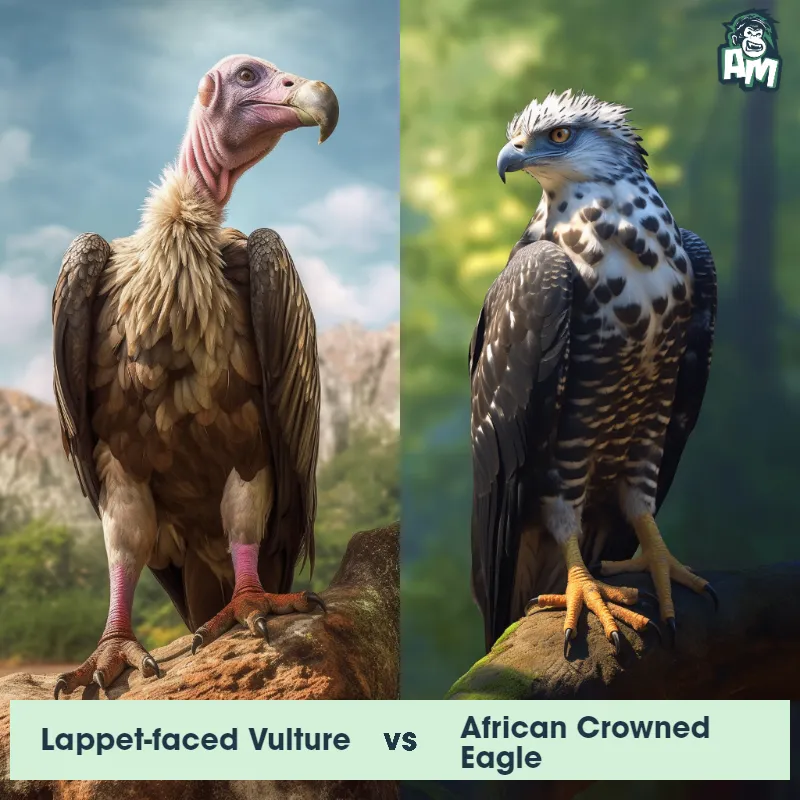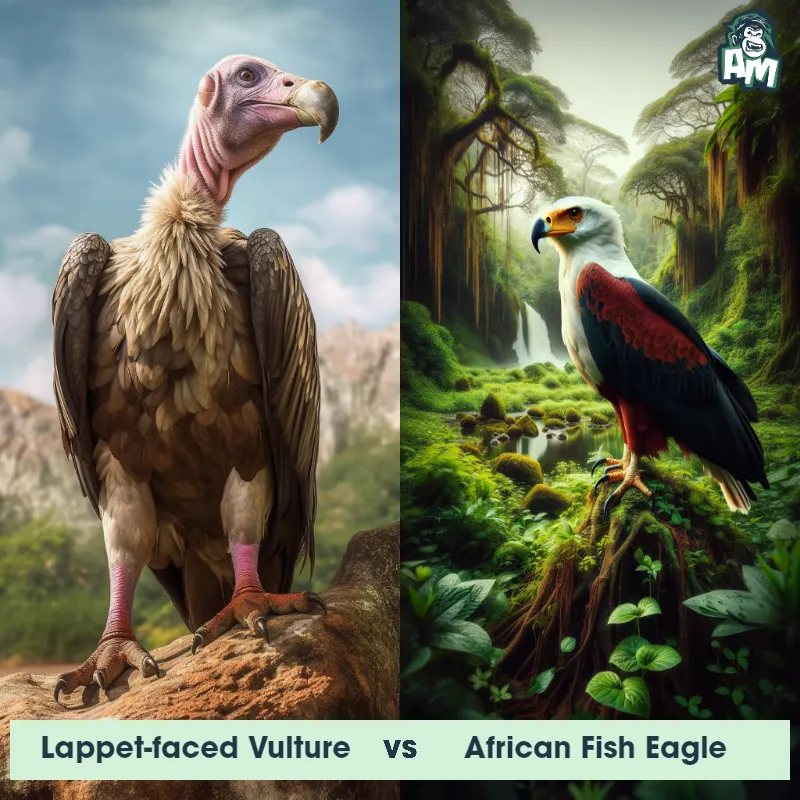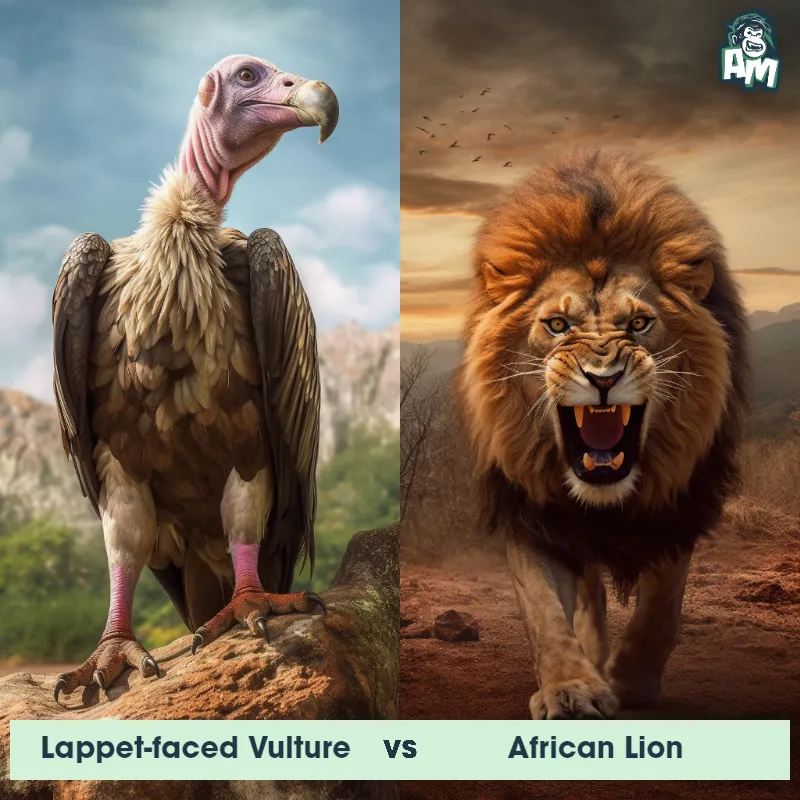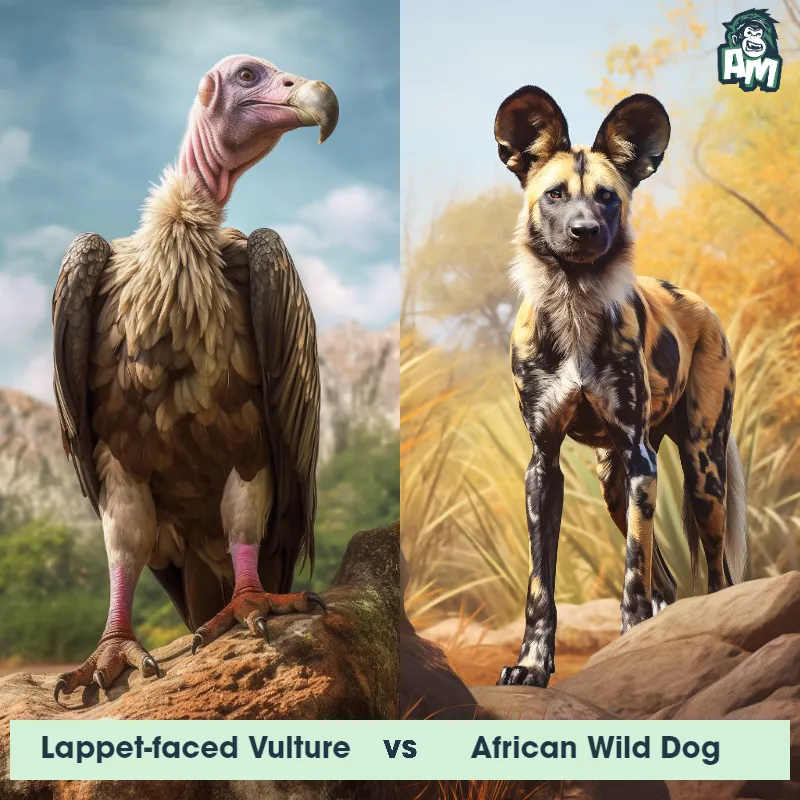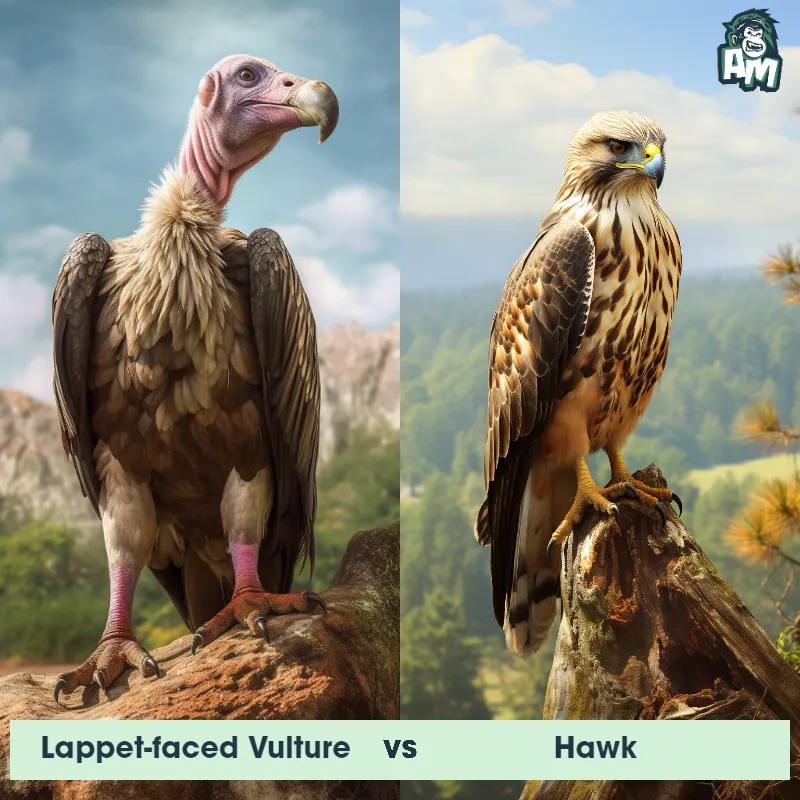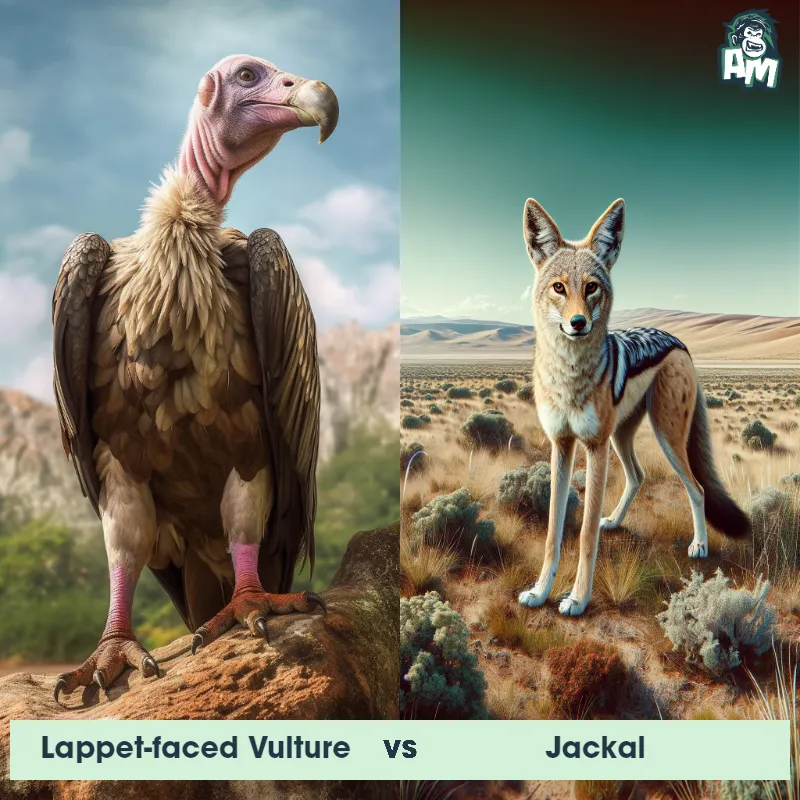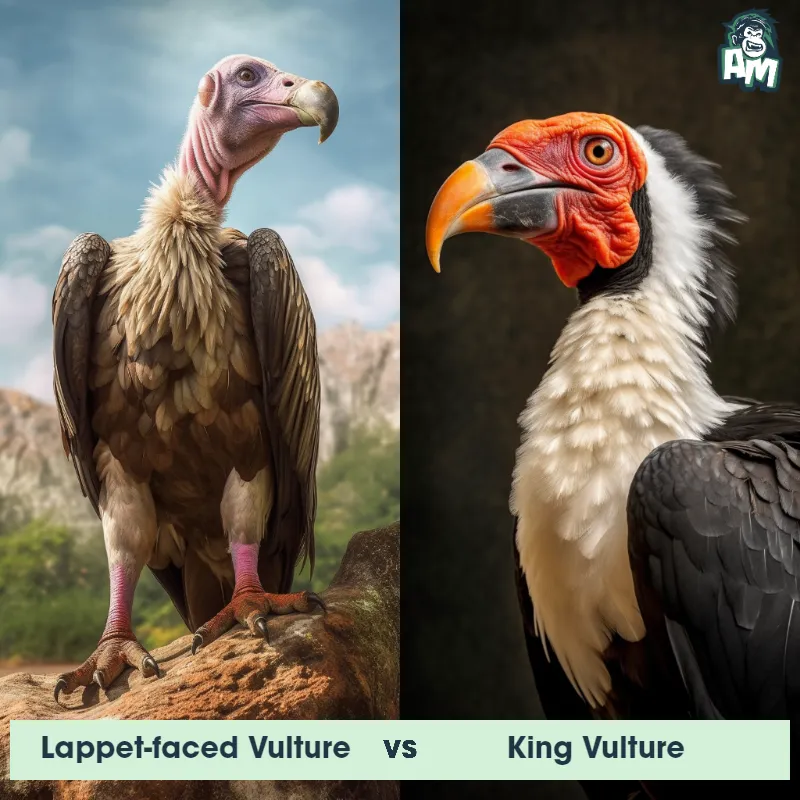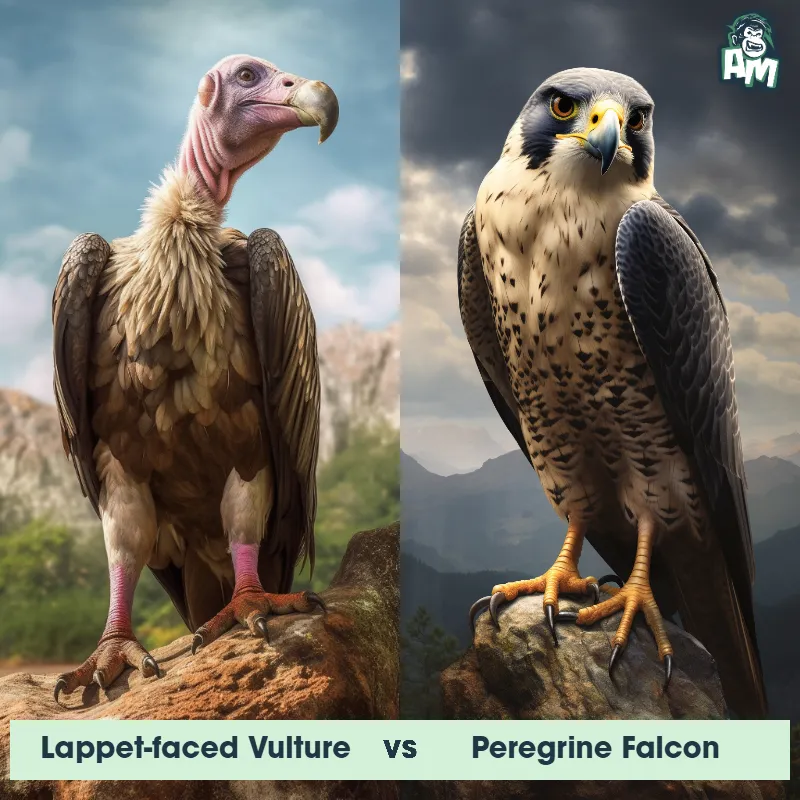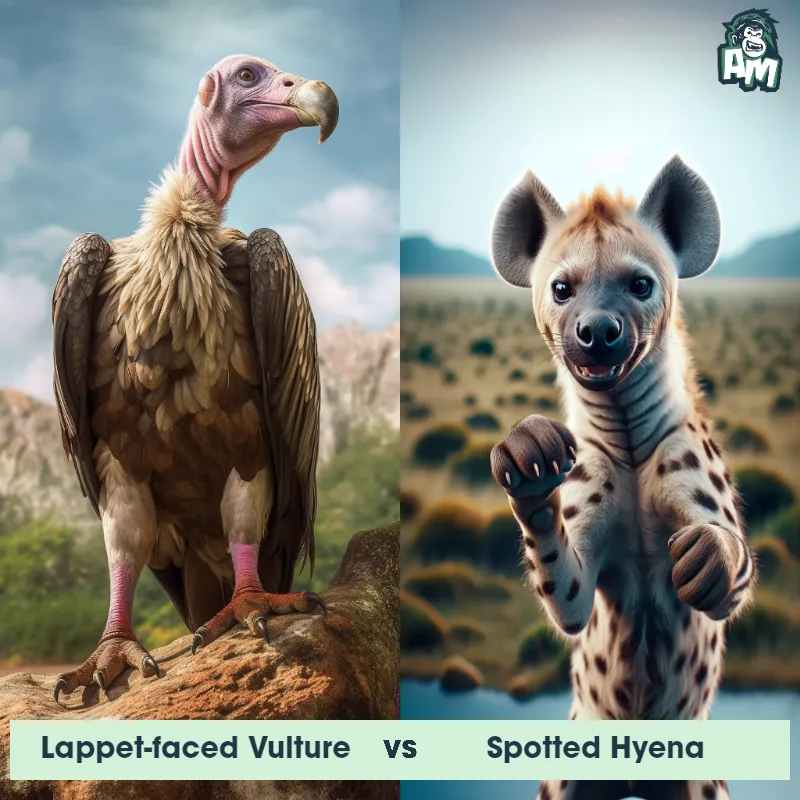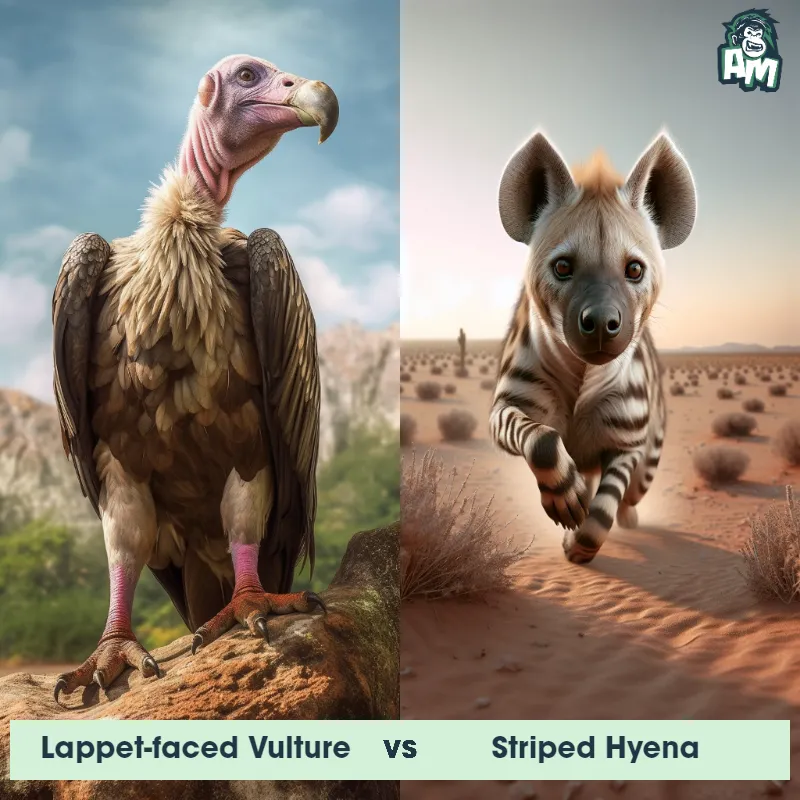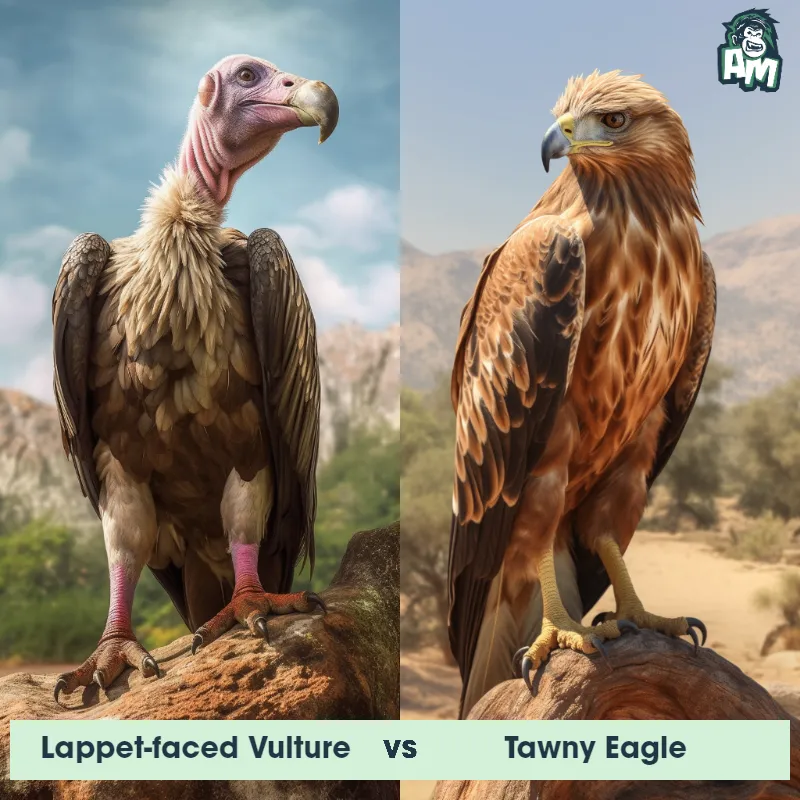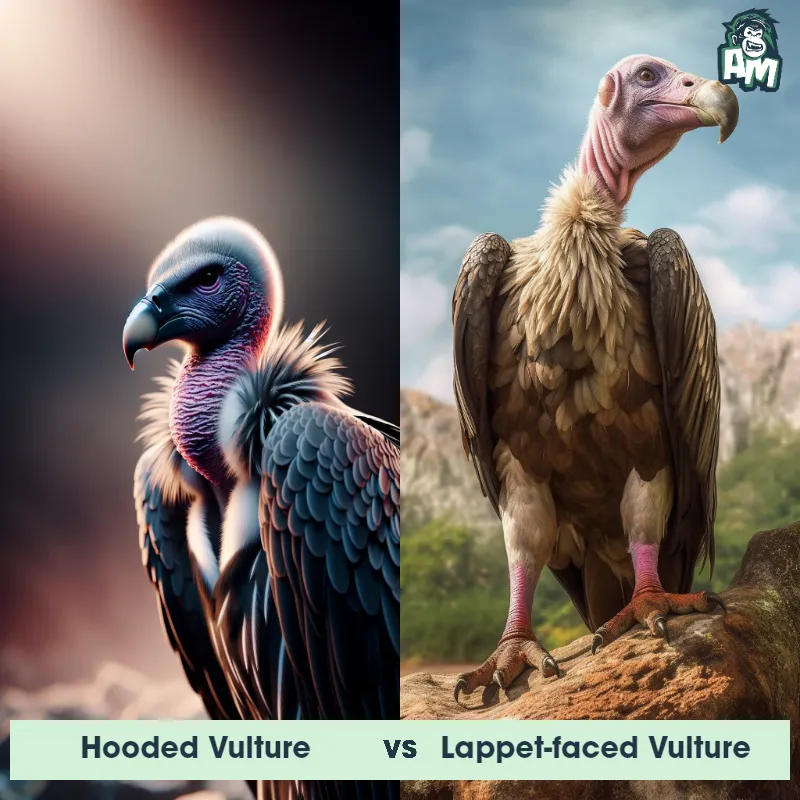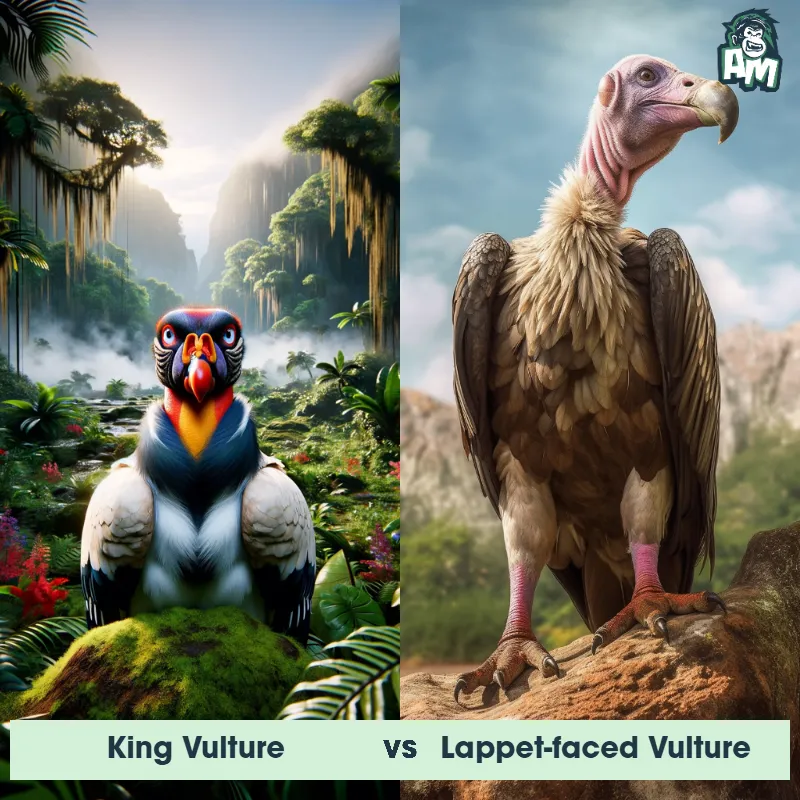The Lappet-Faced Vulture
The Lappet-Faced Vulture, also known as Nubian Vulture, is a large bird of prey found in sub-Saharan Africa. It has a distinct appearance, with a dark brown plumage, a bald head and neck, and a massive hooked beak. Its most noticeable feature is the lappet, a flap of skin that hangs from its beak and extends down its neck. This vulture has a wingspan of up to 9 feet, making it one of the largest vulture species. It scavenges for carrion, using its keen eyesight to locate food from great distances.

| Lappet-Faced Vulture | |
|---|---|
| Size | Up to 1.2 meters (4 feet) in length |
| Weight | Up to 9 kilograms (20 pounds) |
| Speed | Speed: 50 mph (80.5 km/hr) |
| Key Strength | Powerful beak for tearing through tough animal hides and tendons |
| Biggest Weakness | None specified |
| Scientific Name | Torgos tracheliotos |
| Family | Accipitridae |
| Habitat | Savannas and arid regions |
| Geography | Africa |
| Diet | Carrion |
| Lifespan | 40 years - 45 years |

The Lappet-Faced Vulture
The Lappet-Faced Vulture, also known as Nubian Vulture, is a large bird of prey found in sub-Saharan Africa. It has a distinct appearance, with a dark brown plumage, a bald head and neck, and a massive hooked beak. Its most noticeable feature is the lappet, a flap of skin that hangs from its beak and extends down its neck. This vulture has a wingspan of up to 9 feet, making it one of the largest vulture species. It scavenges for carrion, using its keen eyesight to locate food from great distances.
Fun Fact: The Lappet-Faced Vulture has an impressive wingspan that allows it to soar through the skies for long distances without flapping its wings, making it an excellent glider.
| Lappet-Faced Vulture | |
|---|---|
| Size | Up to 1.2 meters (4 feet) in length |
| Weight | Up to 9 kilograms (20 pounds) |
| Speed | Speed: 50 mph (80.5 km/hr) |
| Key Strength | Powerful beak for tearing through tough animal hides and tendons |
| Biggest Weakness | None specified |
| Scientific Name | Torgos tracheliotos |
| Family | Accipitridae |
| Habitat | Savannas and arid regions |
| Geography | Africa |
| Diet | Carrion |
| Lifespan | 40 years - 45 years |
Lappet-Faced Vulture Matchups
We use AI to simulate matchups between the Lappet-Faced Vulture and other animals. Our simulation considers size, strength, and natural predatory behaviors to determine the most likely outcome.

Can't find the Matchup you want?
Create Your Own MatchupLappet-Faced Vulture: Diet, Predators, Aggression, and Defensive Behaviors
What do Lappet-Faced Vultures eat?
Lappet-Faced Vultures primarily feed on the carcasses of large mammals, such as wildebeest, zebras, and antelopes. Lappet-Faced Vulture have powerful beaks that allow them to tear through tough skin and muscle to access the meat, bones, and organs of their prey.
Do Lappet-Faced Vultures have any predators?
Lappet-Faced Vultures do not have many natural predators due to their large size and powerful beaks. However, Lappet-Faced Vulture may occasionally fall prey to large predators such as lions, leopards, and hyenas. Additionally, humans pose a threat to these vultures through habitat loss, poisoning, and illegal hunting.
Are Lappet-Faced Vultures aggressive?
Lappet-Faced Vultures are not typically aggressive towards other animals or humans. Lappet-Faced Vulture are mainly scavengers and are more focused on feeding on carrion than engaging in aggressive behavior. However, Lappet-Faced Vulture may become defensive if their food source is threatened.
Do Lappet-Faced Vultures fight?
Lappet-Faced Vultures may engage in minor confrontations with other vultures or scavengers over access to a carcass. These fights are usually brief and involve displays of dominance rather than physical violence. The vultures will often use their intimidating size and vocalizations to establish dominance.
How do Lappet-Faced Vultures defend themselves?
Lappet-Faced Vultures have a few mechanisms for defense when faced with a threat. Lappet-Faced Vulture may rise on their large wings and soar away from danger, utilizing their impressive flight capabilities to escape predators. Additionally, Lappet-Faced Vulture can use their sharp beaks and powerful talons to defend themselves if necessary.
What is the biggest weakness of Lappet-Faced Vultures in a fight?
Despite their size and sharp beaks, Lappet-Faced Vultures are not built for physical combat. Their relatively lightweight bodies and hollow bones make them vulnerable in close-quarters combat with more agile or strong predators. In a fight, their best defense is often to rely on their intimidating size and vocal displays rather than physical confrontation.
Fun Fact: One unique characteristic of the Lappet-Faced Vulture is its ability to tolerate and even thrive in extremely high temperatures, as it has adapted to arid habitats and can withstand soaring temperatures that would be challenging for most other species.
Fun Fact: Lappet-Faced Vultures have a highly specialized diet, primarily feeding on the tough hides of large mammals. Their strong and sharp beak allows them to tear through the tough skin and access the rich meat inside, making them important scavengers in their ecosystems.



